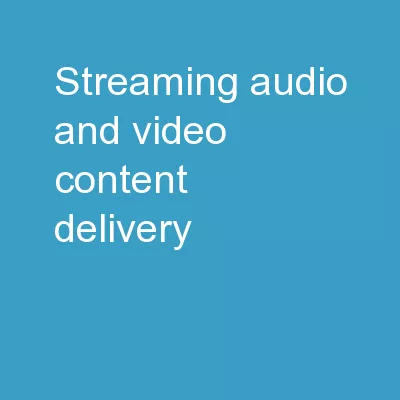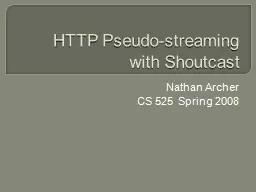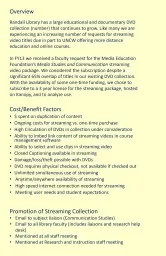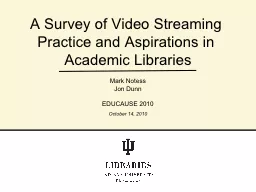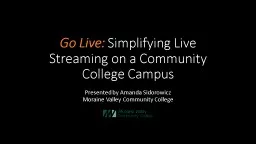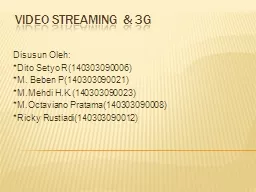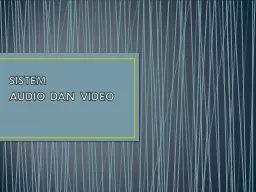PPT-Streaming Audio and Video Content Delivery
Author : alexa-scheidler | Published Date : 2018-12-09
Group 8 Chapter 7475 Digital Audio amp Video Streaming Real time streaming becomes possible around 2000 Two things happened to enable growth More powerful computers
Presentation Embed Code
Download Presentation
Download Presentation The PPT/PDF document "Streaming Audio and Video Content Delive..." is the property of its rightful owner. Permission is granted to download and print the materials on this website for personal, non-commercial use only, and to display it on your personal computer provided you do not modify the materials and that you retain all copyright notices contained in the materials. By downloading content from our website, you accept the terms of this agreement.
Streaming Audio and Video Content Delivery: Transcript
Download Rules Of Document
"Streaming Audio and Video Content Delivery"The content belongs to its owner. You may download and print it for personal use, without modification, and keep all copyright notices. By downloading, you agree to these terms.
Related Documents

